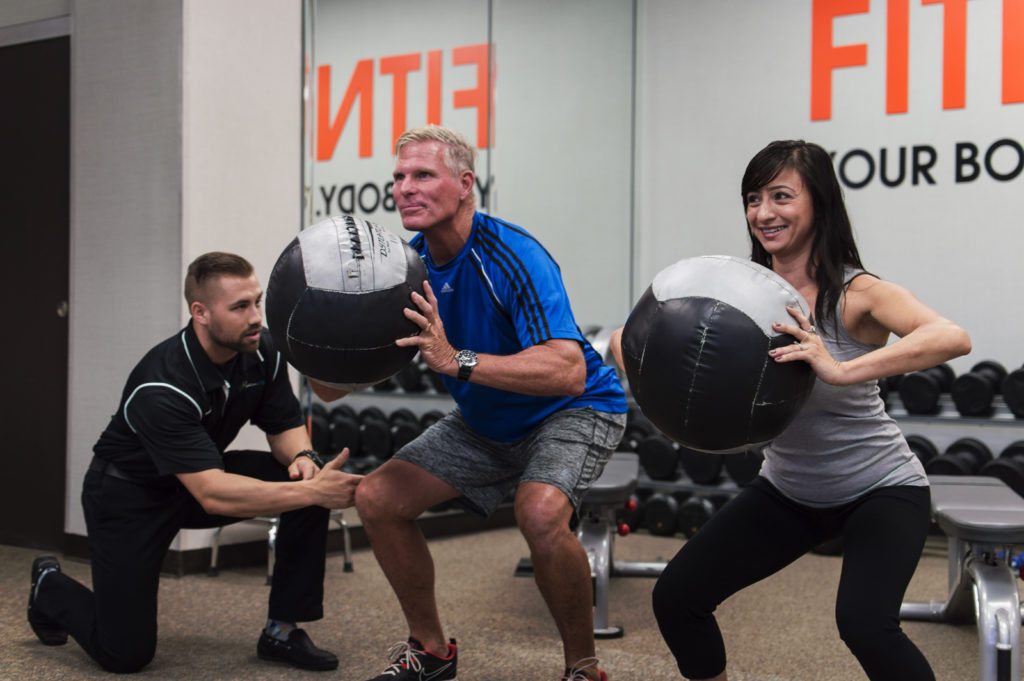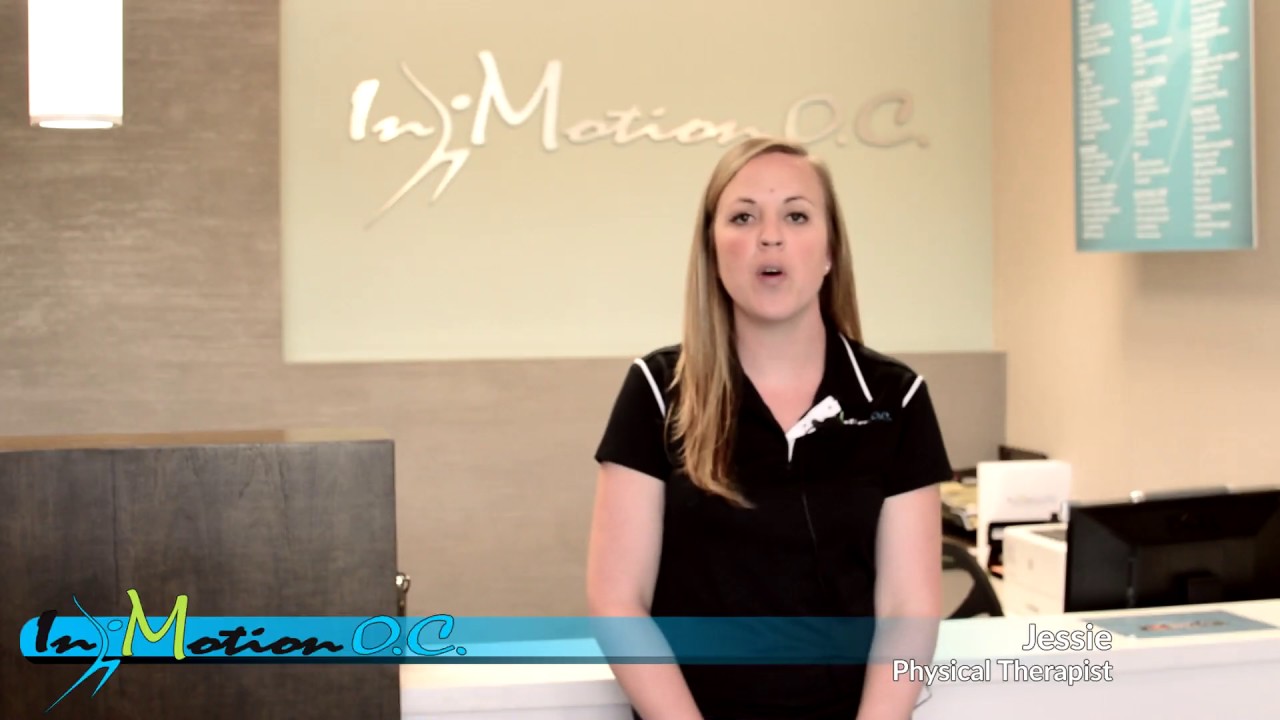Hip

As you learn more about the anatomy and physiology of your body and of each segment, you will begin to understand where the most common origins of pain are located. Within our sections detailing the common ailments we treat, we discuss pain focused in the vertebrae of the neck, head, upper and lower back, as well as the sacroiliac joint connecting the sacrum–which is the cap of the spinal column–and the ilium. We will walk you through an explanation of hip pain, it’s common causes, and how you can remedy this pain at home or through exercises detailed by our physical therapists. At In Motion O.C., we offer our clients useful information on these areas where pain occurs the most, but we also offer them advice on how they may reduce this pain until they come in for a physical therapy consultation.
Anatomical Composition of the Hip
The hip is made up of the top portion of the femur as it connects to the iliac bone, known as the hip bone. At the head of the femur is a layer of articular cartilage, which covers the head of the femur and socket within the ilium. Between these two is the bursa, which is full of synovial fluid that protects the two surfaces from rubbing against each other. As one of the most protected joints in the body, the hip joint at the iliofemoral connection is heavily covered by intricate layers of ligamentous tissue. These layers are on top of one another in a twisting formation to supplement the particular function of the hip when we walk, sit or stand; these ligaments are called the iliofemoral and ischiofemoral ligaments. All of this is surrounded by muscles that move the legs and lower trunk, such as the adductor muscles that pull the thigh inward.

Muscles Surrounding the Hip
- Adductor longus
- Adductor brevis
- Adductor magnus
- Piriformus
- Gracilis
- Pectineus
- Psoas major
- Iliacus
- Tensor fasciae latae
What is hip pain?
The hip joint plays a large part in the movement in the lower trunk of the body, which means it’s often under a lot of stress from weight-bearing, extension, and compression. Three types of hip pain are focused on opposite sides of the hip or just below, where patients will experience pain stimuli. Referred pain is the least common type of pain we see in our clients since the pain they feel may not be the hip, but another condition altogether. At the interior of the hip is where patients suffering from joint-related conditions will feel their pain begin. However, on the exterior of the hip is where muscle and ligament conditions will reveal themselves.
Depending on the level of damage you suffer from, discomfort is equivalent. The pain felt in the hip is similar to soreness after a long day at the gym as muscles and ligaments get overworked from hyperextension. When you’re affected by hip pain, these sensations can move upward of the buttocks and sometimes all the way down the leg into the toes at its most severe. People with this condition have difficulty moving the hip at all; the hip engages in sitting, standing, and walking, so any pain can make these movements almost impossible.
What are the common causes of hip pain?
Diagnosing hip pain is necessary so that any therapeutic movements or treatment can be applied and prove useful. Once we know that the pain you’re experiencing is coming from either soft tissues in the hip or the joint, we can narrow it down to what caused this pain to occur. The common causes of pain in the hip are:
Rheumatoid Arthritis and Osteoporosis
Osteoporosis occurs as bones become brittle and lose their strength, causing degeneration of the bones. Arthritis is the stiffening of the joints, which can make it difficult to move without pain. A combination of these two conditions is painful and physical therapy is needed.
Bursitis
This is the inflammation of the hip bursa located between the head of the femur and the iliac socket. High levels of activity in this joint can cause the bursa to swell and any movement only makes it worse.
Dislocation of the Hip Joint
If you have ever suffered from a dislocated bone in larger bone complexes, you know that it can be painful. When the joints in the hip are dislodged from their proper positioning, resistance is what you feel. If you feel that you have a dislocated hip, it’s important to see a doctor or else you risk damaging the joint and rupturing ligaments in the process; this could affect your ability to walk comfortably.
Muscle Strain or Tendonitis
Considering the heavy ligamentous connections throughout this area and the muscles used to move the hip in various directions, it’s easy to understand how any overextension of the muscles or tearing of these ligaments might occur. Most sports-related injuries are associated muscle strain or tendonitis in the hip.
Piriformis Syndrome (Pinched Nerve)
Patients suffering from piriformis syndrome feel pain here because of the piriformis muscle connection to the greater trochanter portion of the femur bone. Previously we talked about the sciatic nerve in sacroiliitis; its position in between tissues and the effects of the sciatic nerve when it’s pinched apply here as well. Based on the specific movements of the hip, the sciatic nerve gets irritated as it’s lodged between this muscle and related tendons.
 <
<What can you do about hip pain?
Depending on the cause of your hip pain, there are some remedies you can try at home before you see a doctor or physical therapist. Some of the pain related to the hip can be reduced with a few simple steps or focused physical therapy exercises. Try out these tips to reduce hip pain:
Rest Up
Muscles, ligaments, and joints all need proper rest. Take some time to allow for decreased movement so that any inflammation isn’t further stressed.
Stretch
Using controlled movements when stretching, the muscles are given the chance to lengthen without hyperextension or quick motions. Stretching allows for increased blood flow and warming of your muscle groups. We suggest up to 30 seconds of stretch per area.
Cold Compresses and Anti-Inflammatory Medication
A combination of rest, cold packs and anti-inflammatory medications such as aspirin or ibuprofen can reduce the inflammation surrounding your hip joint, ligaments and tendons.
Physical Therapy
Here are some of our favorite exercises illustrated below by our physical therapists, that can ease the stress on your hip joint and related muscles. Try these physical therapy exercises at home and make sure you don’t overdo it if you feel discomfort.
If you continue to feel pain in your hip after following these exercises and tips, call In Motion O.C. at 949.861.8600 to schedule your physical therapy consultation. We also offer patients fall prevention sessions to reduce their chances of falling since the hip is often a complicated fracture point for many.
*This information about physical therapy for hip ailments was reviewed by Dr Natalie Thomas, PT, DPT. If you have any questions, please don’t hesitate to contact us here.


